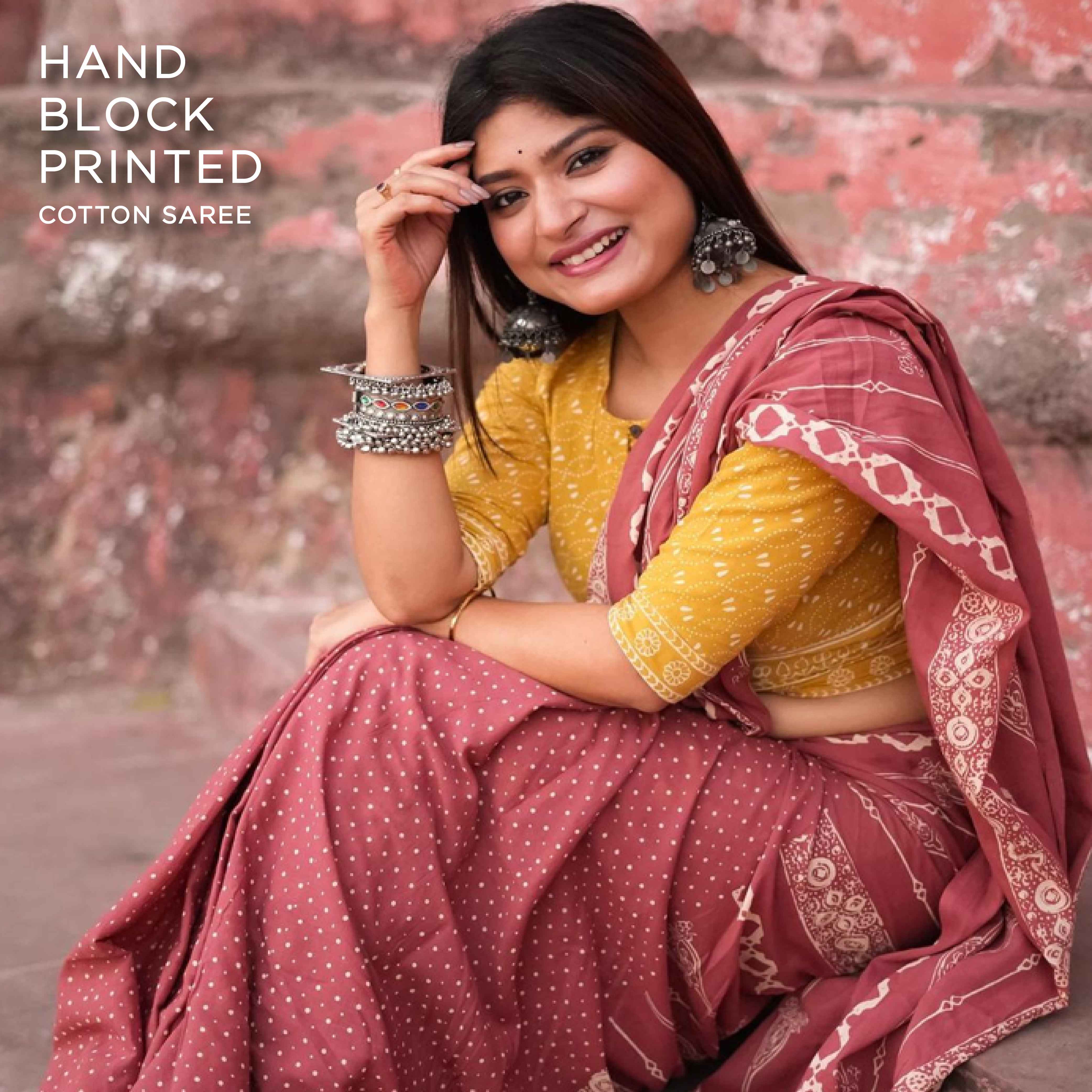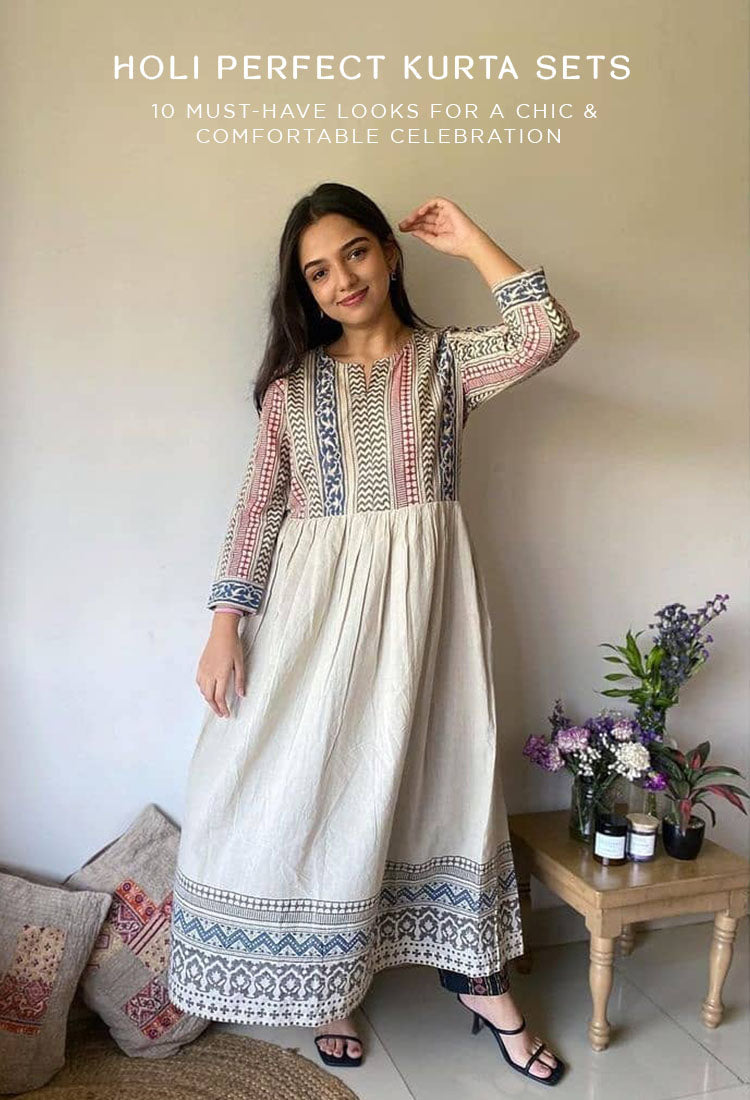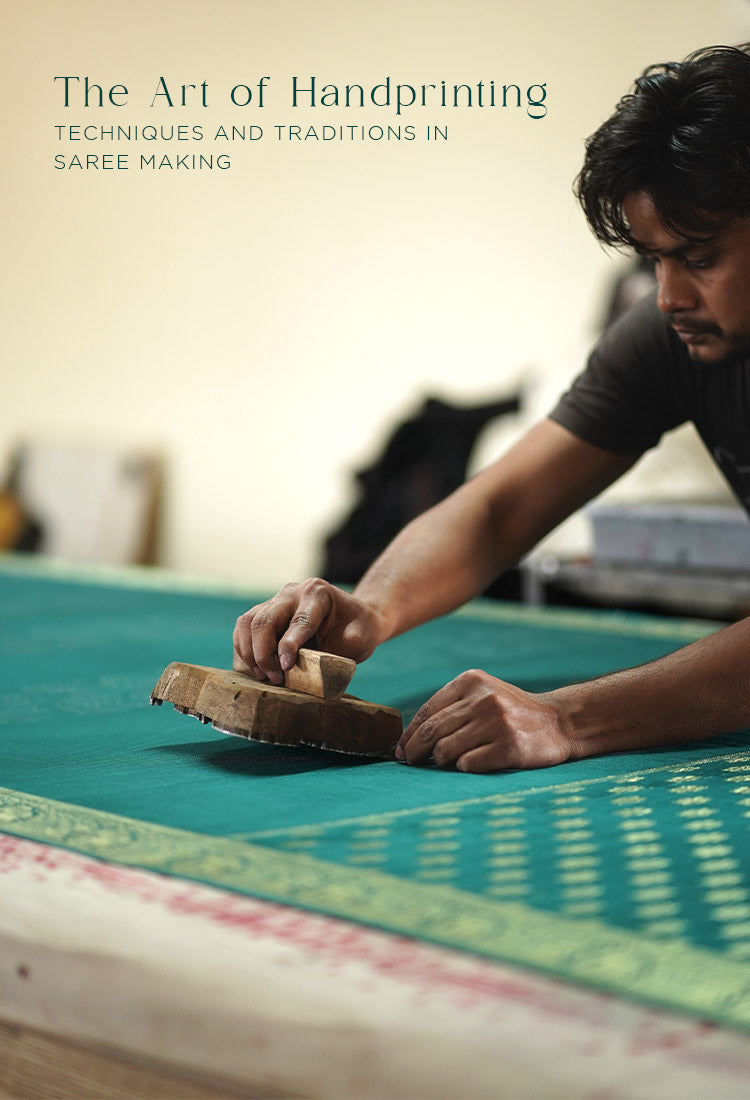Imagine a piece of fabric, a canvas of vibrant hues and intricate patterns, each motif whispering tales of generations past. The subtle irregularities, the tactile texture, the sheer artistry- this is the soul of hand block printing, a craft that transcends mere decoration, becoming a living chronicle of cultural heritage. Hand block printing, at its core, is the art of imprinting designs onto textiles using hand-carved wooden blocks, a technique that marries skills and tradition in a symphony of creative expression.
More than just a method, it's a testament to human ingenuity, a celebration of natural resources ,and a timeless expression of beauty. In addition to fashion, hand block printing is essential for maintaining cultural history. Many areas, particularly India, have created unique styles that have been handed down through the years. These patterns are more than just patterns; they are representations of tradition, history, and identity.
Hand block printing continues to find a global audience that enjoys its charm and authenticity as the world comes to respect handcrafted and ethical products such as block printed dupatta, block printed cotton dress or block printed silk sarees more and more. This blog post embarks on a journey through the intricate world of hand block printing, exploring its historical roots, dissecting its meticulous processes, celebrating its regional variations and pondering its enduring relevance in our increasingly mechanized world.
Historical Roots and Evolution
The genesis of hand block printed designs and textiles stretches back to millenia, with archeological evidence pointing to its practice in ancient civilizations across India, China and Egypt, with early evidence found in Indus Valley civilization. In India, particularly, the art form thrived, becoming deeply interwoven with the social and cultural fabric of the subcontinent.
Early methods were rudimentary, utilizing simple wooden blocks and natural dyes to adorn textiles for clothing and ceremonial purposes. As time progressed, hand block printing evolved, adapting to the unique ecological and cultural landscapes of different regions. In India, states like Rajasthan, Gujarat and Andhra Pradesh emerged as hubs of innovation, each developing its own block printed design style. Royal patronage further elevated the status of hand block printing, transforming it from a mere craft into an art form of prestige. This support not only ensured the preservation of traditional techniques but also fostered a culture of innovation and excellence.
Materials and Tools
The materials used in hand block printing are as integral to the craft as the techniques themselves, reflecting a deep connection to the environment and commitment to sustainability.
Wooden Blocks
These blocks are the most essential tools in hand block printing. Traditional artisans favour natural materials, choosing Sheesham, Teak and other hardwood varieties for their durability and ability to hold intricate carvings.
Fabric
Cotton, linen and silk are most commonly used due to their absorbent qualities, breathability and comfort. These fabrics are pre-treated to ensure colour retention and durability in case of sarees for women, dupatta for women, dresses one piece design or kurti set for women.
Natural Dyes
Natural dyes, derived from plants, minerals and insects, are a hallmark of traditional hand block printing, offering a palette of rich, earthy tones that reflects the natural world. Indigo, extracted from the Indigo plant, yields a deep, vibrant blue, while the madder root produces shades of red ranging from soft pink to deep crimson. Turmeric offers a warm golden yellow, while pomegranate rind and myrobalan provide shades of brown and yellow. Other natural dyes include iron rust, which creates a deep black and cochineal, which produces a vibrant red.
Mud, Wax and Mordants
By blocking dye absorption in particular regions, a mud paste is utilized to produce patterns in resist-dye methods like Dabu printing. Wax is also utilized in batik printing to create intricate resist block printed designs. Substances like Alum, iron and tannins help to fix natural dyes onto the natural fabric, enhancing their vibrancy and longevity.
The Process: From Design to Fabric
The creation of hand block printed fabric is a labour of love, a journey that begins with a meticulous carving of the wooden block. Using tools passed down through generations, artisans transform designs into tangible imprints, each stroke a testament to their skill and dedication. Thanks to their fine grain and longevity, teak and sheesham wood are preferred for creating complex carvings that perfectly convey the design's spirit on block printed dupatta, block printed cotton dress or block printed silk sarees.
The intricate fabric of Indian heritage is reflected in the designs, which are frequently influenced by mythology, nature, and traditional customs. Common themes that each have their own symbolic meaning include floral motifs, geometric patterns, and depictions of deities. For instance, the stylized flower design known as the "buta" motif is a common feature in Indian textiles and represents wealth and success.
The fabric needs to be ready to absorb the dye after the blocks have been carved. Popular options include cotton, silk, and linen; each needs a particular pre-treatment to guarantee the best results. While mordanting aids in fixing the colors and preventing fading, scouring and bleaching eliminate impurities and get the fabric ready for dyeing. In order to create a canvas for the intricate patterns to follow, the fabric is colored before printing if a base color is preferred.
The printing process itself is a delicate dance of precision and skill requiring years of experience to master. Natural and synthetic dyes are mixed to achieve desired colour and consistency. The fabric is laid out on a long printing table then the artisan carefully dips the block in dye and presses it into the fabric. The process is repeated, creating a continuous pattern. Multiple printings and layering of colours to add depth and complexity to the block printed designs. The fabric is then left to dry and colours are fixed using different techniques. Sun drying is preferred, as it allows the colours to set naturally.
Styles and Variations in Hand Block Printing
India boasts a diverse range of hand block printing styles, each distinguished by its technique and regional variations. Some of the notable styles include:
Bagru Printing
This style, which originated in Bagru, Rajasthan, is renowned for its natural dyes and earthy hues. Animal shapes, geometric shapes, and floral patterns are frequently used hand block printed designs.
Sanganeri Printing
Vibrant colors and elaborate floral patterns define Sanganeri prints. Originating in Sanganer, Rajasthan, this style became well-known during the Mughal Empire and is still in great demand today.
Jaipur Printing
Jaipur prints frequently use a variety of colors and methods to combine geometric and floral themes on cotton saree, blouse designs or dresses designs.
Ajrakh Printing
The intricate, multi-step method of ajrakh printing is mostly used in Gujarat and Sindh. It has natural dyes, symmetrical designs, and a deep blend of madder red and indigo.
Kalamkari Printing
Andhra Pradesh is the birthplace of kalamkari, or "pen work," a type of block and hand-painted printing. It frequently features complex ideas and legendary stories.
Dabu Printing
A mud paste is applied to certain cloth sections prior to dyeing in the resist dyeing method known as dabu printing. This produces distinctive, textured designs.
Cultural and Economic Impact of Hand Block Printing
For thousands of artists in India and other countries, hand block printing is more than just an art form—it is their source of income. The sector is essential to maintaining traditional craftsmanship and protecting cultural heritage.
Empowering Artisans and Rural Communities
Numerous clusters of hand block printing businesses are located in rural locations, where artists teach their craft to future generations. Customers who support this craft help these communities maintain their way of life and improve their economic well-being.
Promoting Sustainable and Ethical Fashion
An environmentally beneficial substitute for mass-produced saree, dupatta , kurti or dresses is hand block printing. For customers who care about the environment, it is a sustainable option simply because it uses natural colors, handmade techniques, and biodegradable materials.
Reviving Traditional Art Forms
Efforts to bring back hand block printing have gotten stronger despite the popularity of machine printing. In order to incorporate traditional fabrics into contemporary fashion and home décor, fashion designers, brands, and organizations are working with craftspeople.
Global Appeal of Hand Block Printing
Textiles with hand block printing have captured the attention of designers and fashionistas everywhere. These fabrics are very sought-after in global markets due to their distinctive, handcrafted attractiveness. Hand block patterns have made an appearance in modern design, from bohemian-inspired apparel to opulent home furniture.
International designers have celebrated the artistry and skill of Indian artisans by incorporating hand block prints into their collections. The market for genuine hand block printed goods is still being driven by the popularity of handmade textiles and slow fashion.
We at Chidiyaa, thrive to provide you with the exclusive textiles crafted using hand block printing:
- Embrace the traditions with our range of hand block printed sarees for women
- Our selection of kurtis set for women is the perfect fusion of comfort and contemporary style
- Complement your kurti with this delicately designed dupatta
- Our hand block printed dresses are the ideal balance of heritage and modernity
- Complete your saree looks with our hand block printed blouse designs
Challenges and Future of Hand Block Printing
While hand block printing remains a cherished craft, it faces several challenges in the modern era. Its survival is threatened by the competition from machine-printed textiles, the availability of less expensive synthetic fabrics, and the loss of talented craftspeople.
Initiatives to support and safeguard hand block printing, however, are becoming more popular. The preservation of this art form is being aided by government programs, non-governmental organization assistance, and sustainable fashion initiatives. By selecting handcrafted textiles over mass-produced counterparts, consumers may make a big difference.
Take Away For You!
Hand block printing is more than just a textile technique; it is a cultural legacy that reflects the skill, creativity and heritage of artisans. As the world moves towards ethical and sustainable fashion, the appreciation for hand block printing continues to grow. By supporting this age-old craft, we contribute to the livelihoods of artisans and ensure that this timeless tradition thrives for generations to come.
Embracing hand block printed textiles not only adds a touch of elegance to our wardrobes and homes but also keeps an ancient tradition alive. Whether it’s a beautifully printed kurti, a decorative bed sheet or a statement scarf, hand block printing offers a unique, artistic and eco-friendly choice for all.











